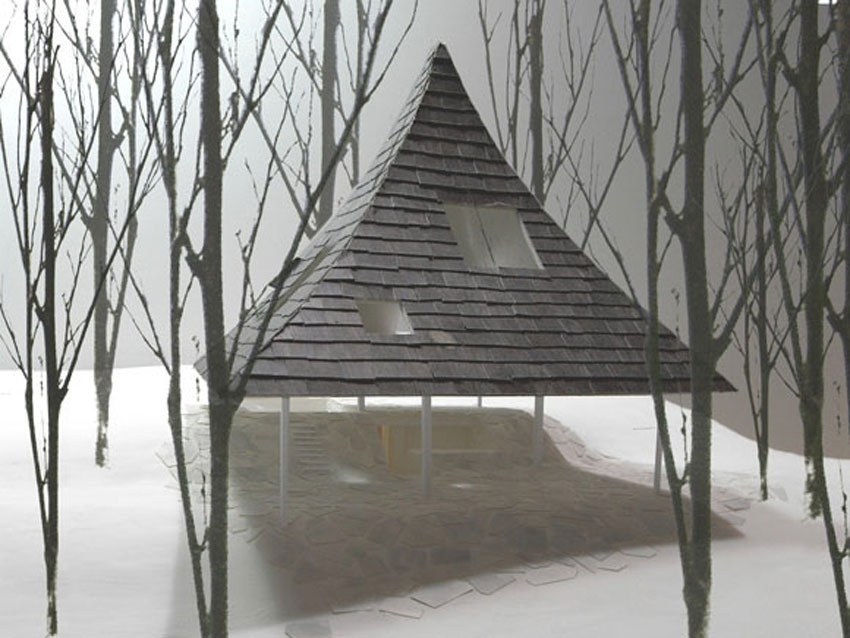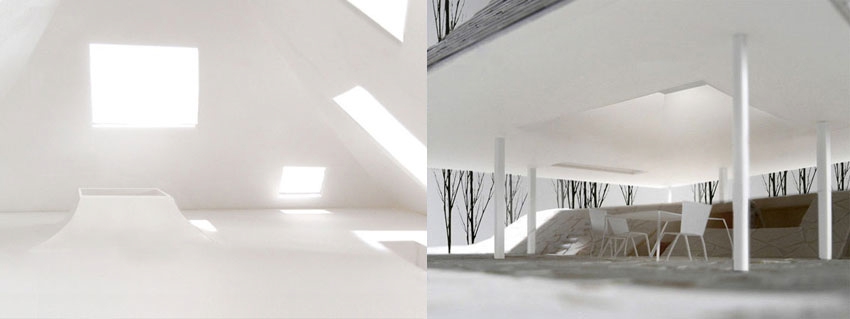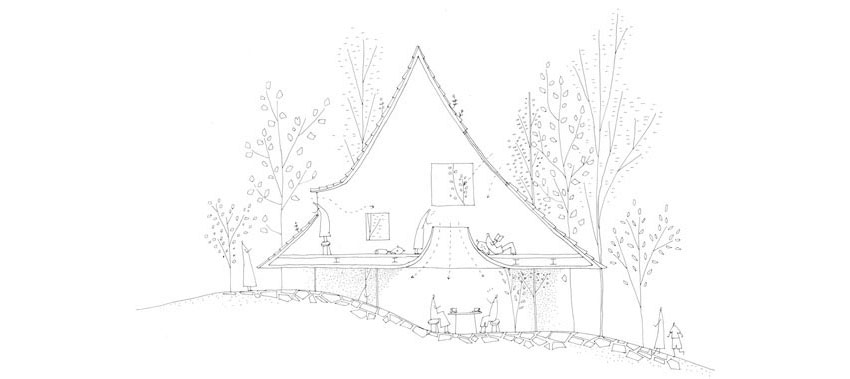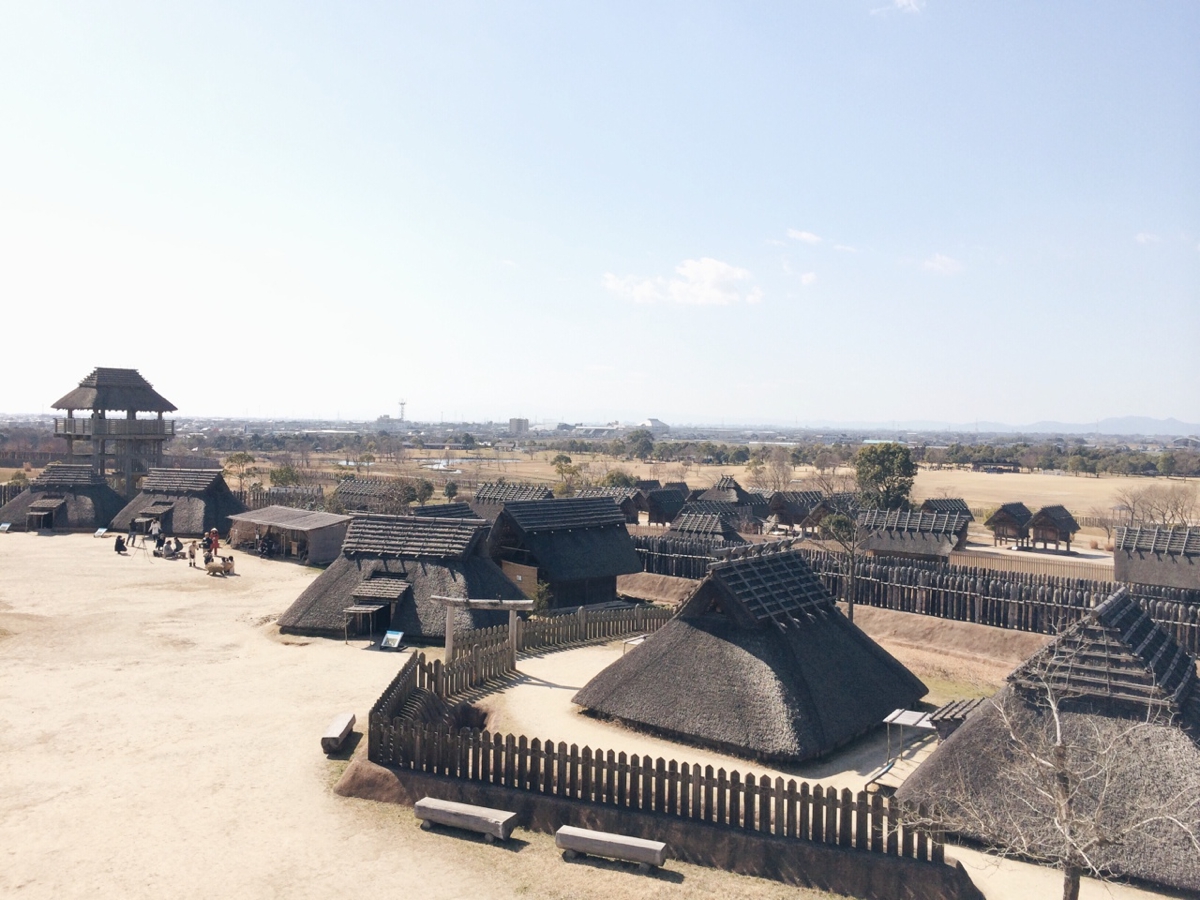This small weekend house by Onishimaki + Hyakudayuki Architects is under construction in a popular getaway outside Tokyo. The project combines combines tradition with creativity.
Weekend House in Sengataki technical information
- Studio: Onishimaki + Hyakudayuki Architects
- Architects: Maki Onishi and Yuki Hyakuda
- Location: Sengataki, Japan
- Project Year: 2012
For us, building a structure resembles the weaving of a story. A thrilling fantasy begins in the familiar world around us, but then, at some point, carries us off to another world altogether.
– Maki Onishi and Yuki Hyakuda
Weekend House by Onishimaki + Hyakudayuki Architects description
The design process began with a vision of a solitary roof drifting mystically above the trees like a watchful animal in the forest. The roof was conceived as an alien object in the environment, one that has its own spirit, as if it were a living creature.
Interior columns support the roof. Operable glazings surround the ground floor below, creating the illusion that the building is levitating amongst its surroundings. In the next levels, the floor level follows the undulating contour of the ground introducing light to the ground shaded floor.
Inspired in the large and complex Yayoi archaeologicalsite in Yoshinogari as we can apreciate in the Architects tumblr, the project uses tradition to propose a new outstanding culture of habitat.
“For us, building a structure resembles the weaving of a story. A thrilling fantasy begins in the familiar world around us, but then, at some point, carries us off to another world altogether” says Maki Onishi and Yuki Hyakuda
Yoshinogari
Yoshinogari (吉野ヶ里 遺跡 Yoshinogari iseki) is the name of a large and complex Yayoi archaeological site in Yoshinogari and Kanzaki in Saga Prefecture, Kyūshū, Japan. According to the Yayoi chronology established by pottery seriations in the 20th century, Yoshinogari dates to between the 3rd century BC and the 3rd century AD. However, recent attempts to use absolute dating methods such as AMS radiocarbon dating have shown that the earliest Yayoi component of Yoshinogari dates to before 400 BC.
This archaeological site is of great importance in Japanese and world prehistory because of the massive size and important nature of the settlement and the artifacts found there. Yoshinogari consists of a settlement, a cemetery, and multiple ditch-and-palisade enclosed precincts. Bronze mirrors from China, Japanese-style bronze mirrors, bronze daggers, coins, bells, and halberds, iron tools, wooden tools, prehistoric human hair, and many other precious artifacts have been unearthed from Yoshinogari features. The total area of this site is approximately 40 hectares. This site has been continuously excavated by a number of different agencies and institutions since 1986. Due to the superior features, artifacts, and significance in Japanese prehistory and protohistory, the site was designated as a “Special National Historic Site” in 1991, and a National Park was created there in 1992. Ancient structures are being reconstructed on the site and the park is a major tourist attraction.
About o+h, Onishimaki + Hyakudayuki Architects
o+h was established in 2008 by Maki Onishi and Yuki Hyakuda in Tokyo. Their works include installations, sculptures, and architectural design. sucha as the weekend house in Sengataki, Japan in 2006, the double helix house in Tokyo in 2011, and the “Home-for-All,” a project for children living in temporary housing in Higashi-Matsushima, built in 2013.
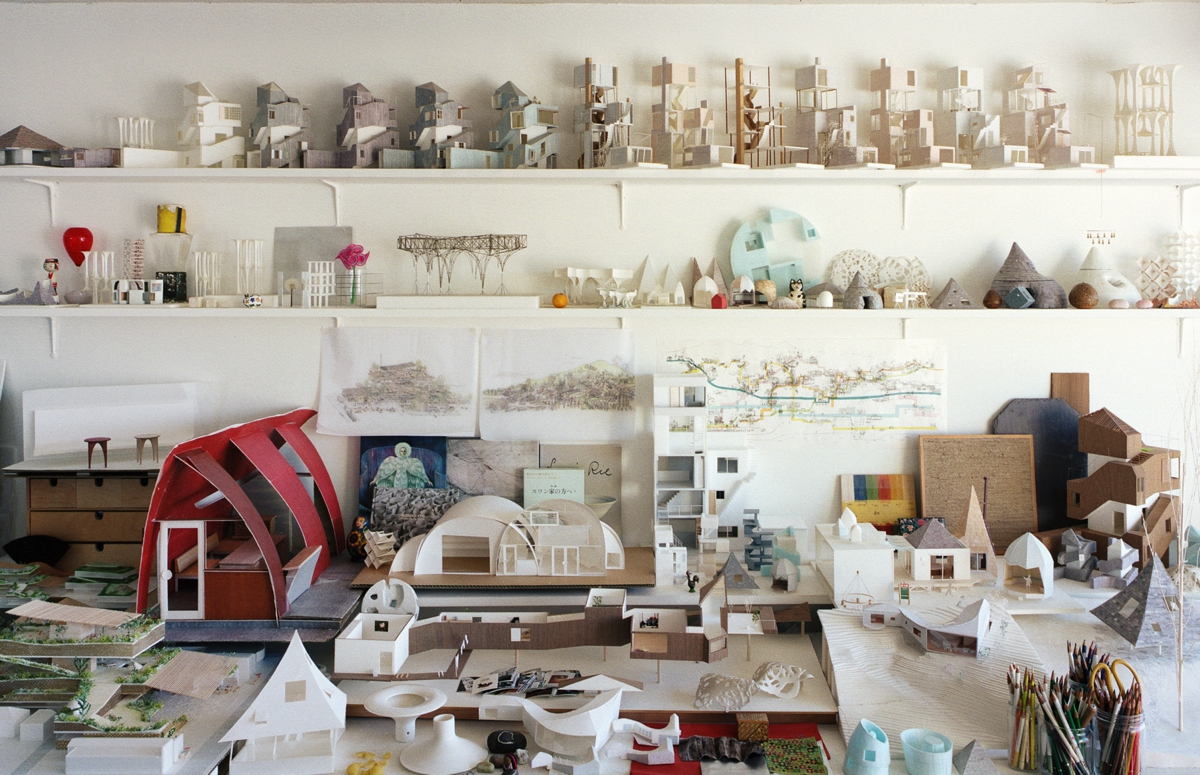
[cite]

